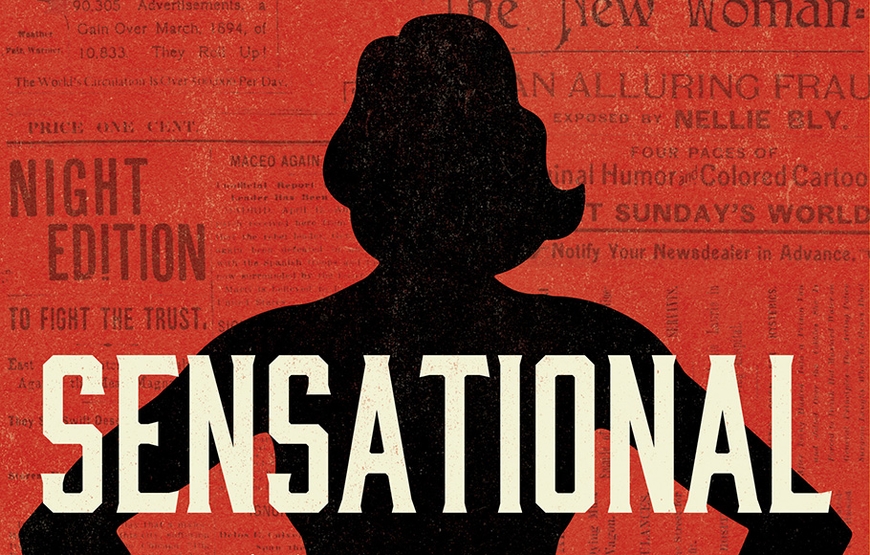New Pages Summer 2021
Faculty

Professor Timothy Brennan
Places of Mind: A Life of Edward Said
Farrar, Straus and Giroux, 2021
From The Guardian: "Brennan was Said’s student and friend, familiar with his ideas and comfortable in his company. For Places of Mind he worked closely with Said’s family, conducted interviews with a wide range of his friends and colleagues and (he must have) thoroughly mined the archive held in Columbia University, where Said taught for his entire career. Nobody is just one thing, Said insisted. Brennan’s achievement is to do justice to the many things Said was and to articulate the synapses that connected his different worlds, so ideas that had their birth in one found their use in another. He has provided us with what you might call a manual of Said; a map of his thoughts and his positions, which, change as they did, could always be traced to a core set of ideas and drives and to do this without ever blunting Said’s subtlety or smudging the clarity of his ideas."
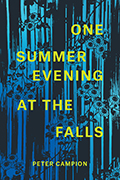
Professor Peter Campion
One Summer Evening at the Falls [poetry]
University of Chicago Press, 2021
From the publisher: "The poems in this collection capture the fantastic feeling of falling in love, all while keeping eyes on its lifecycles of crashing aftermaths, lingering regrets, guilt, and renewal. Peter Campion brings us to a series of scenes—on the damp patio, in the darkroom, and along the interstate—where we find familiar characters, lovers, and strangers." From author Ahmad Almallah: “The poems here reiterate Campion’s exceptional sensitivity to sound, and his ability to listen and allow for the voices coming into his lines to become as integral to the poet’s conception of the self as any voice from within. With this rare ability, Campion composes poetry that places the American scene outside of itself and opens it to the rest of the world like no other American poet.”
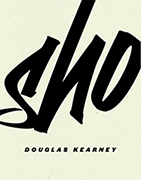
Associate Professor Douglas Kearney
Sho [poetry]
Wave Books, 2021
From NPR: "Sho explores Black masculinity, police killings, and Christianity, often interrogating race through the metonymy of skin. If we show our race, our seemingly most fateful attribute, on our skin, does that mean skin is actually one's interior? This is just one of the book's Zen koans, to use Kearney's characterization of his poems. A charismatic creator of performance and print, Kearney is a contradictory artist: He writes from the vernacular and hip hop, slang, sprung rhythms and song riffs, but also mutates English into an intellectually dense, artificial language. . . . Kearney's prosody is miraculous. Explosive double beats launch the lines or hit the break like a hi-hat. Slant rhymes suggest infinite puns, but Kearney sometimes downshifts from complexity and just cruises around the neighborhood. Formalism as syncopation and signification: I can't think of another writer as gifted as Kearney is at sound."
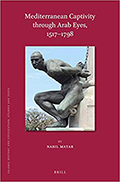
Professor Nabil Matar
Mediterranean Captivity through Arab Eyes, 1517-1798
Brill, 2021
From the publisher: "The post-Lepanto Mediterranean was the scene of 'small wars,' to use Fernand Braudel’s phrase, which resulted in acts of piracy and captivity. Thousands upon thousands of Europeans, Arabs, and Turks were seized. Europeans wrote extensively about their ordeals, making captivity a key subject in Europe’s Mediterranean history. The Arabs wrote little because their religious culture militated against such writings, which would be construed as expressing disaffection with the will of God. Nor were there detailed records and registers of captives (their names, places of origin, and ransom prices) similar to what was kept in the European archives. Contrary, however, to what some historians have claimed, there was a distinct Arabic narrative of captivity that survives in anecdotes, recollections, reports, miracles, letters, fatawa, exempla, and short biographies in both verse and prose. Cumulatively, these sources constitute the Arabic qiṣṣas al-asrā, or stories of the captives, in the native language and idiom of the men and women of the early modern Mediterranean."
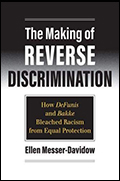
Professor Ellen Messer-Davidow
The Making of Reverse Discrimination: How DeFunis and Bakke Bleached Racism from Equal Protection
University Press of Kansas, 2021
From author Amaka Okechukwu: "The Making of Reverse Discrimination is a deep-dive into the foundational court cases of affirmative action’s early history, DeFunis v. Odegaard and Regents of University of California v. Bakke, cases that have shaped the legal landscape for race-inclusive admissions for over forty years but are not fully understood in detail. Using insights from history, sociology, and critical literary studies, Messer-Davidow expertly illustrates how these anti-affirmative action cases constructed white victims and excluded minority interests, setting a precedent for future cases. Placing these cases in a broader social and discursive context, this book is an excellent read for scholars of affirmative action, higher education, and the law."
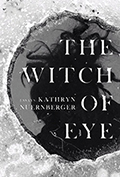
Associate Professor Kathryn Nuernberger
The Witch of Eye: Essays
Sarabande Books, 2021
From The Rumpus: "This is quintessential reading not just for the wannabe witches among us, but for its nuanced telling of a cruel and silenced history. A compendium of pungent and poignant biographical narratives of numerous so-called witches, The Witch of Eye is difficult to put down. Nuernberger deftly weaves memoir with well-researched material to create a fascinating, idiosyncratic intellectual history, plucked from the annals of science, medicine, theology, and feminist and critical theory. Within her rich ruminations about 'cunning women' across time and space, she embeds her own story, a narrative that binds the essays together. The prose is visceral and heady at the same time, compelling as only a poet can manage. . . . Yes, you must read The Witch of Eye slowly and with astonishment, not unlike the way you witness the work of a camera placed next to a bud that slowly and inexplicably blossoms before your eyes."

Associate Professor Kim Todd
Sensational: The Hidden History of America's “Girl Stunt Reporters”
Harper Collins, 2021
From The New Yorker: "Sensational is cheekily dedicated to 'the ink-stained Amazons'—an image that, in author Kim Todd’s hands, evokes a league of Wonder Women slinging their lassos of truth. In the second half of the nineteenth century, Todd argues, a new breed of journalist emerged: plucky, clever, and dedicated less to flaunting her 'natal mind' than to exposing society’s ills. Nellie Bly is this figure’s most famous incarnation, but the girl stunt reporter had many faces. . . . [T]hese women helped to invent modern investigative reporting—and shaped the trajectories of creative nonfiction and memoir, too. . . . [Todd] smartly dissects the allure of the girl-stunt genre, which ‘put a new female character in the headlines'. . . . For men, this character offered drama and the thrill of seeing power humiliated; for women, there was vicarious pleasure, a sense of vindication as the heroine fought institutions—judges, doctors, skeptical editors—and won."
Alums and Students

Mary Casanova (BA 1981)
Waterfall [fiction]
University of Minnesota Press, 2021
From The Star Tribune: "In Mary Casanova's latest novel, 21-year-old Trinity Baird is summering on the family island in northern Minnesota after a two-year stint at an asylum in St. Peter, Minn. It is 1922—think women's suffrage, costumed dinner parties, wooden speedboats. Think The Great Gatsby comes to the Boundary Waters. . . . Casanova portrays the characters of Baird Island vividly: There are glittering socialites, a Hollywood actress, a rugged environmentalist, a father who 'denied hard truths' (another way to say racist), a young architect, a defiant divorcée and her maid, and Sinclair Lewis as laconic Greek Chorus, telling Trinity, 'You should be causing your parents alarm.' Over the course of the summer, these characters swim, yacht, drink, and twirl parasols while Trinity befriends the young architect, paints in her studio, and comes to terms with who she is."
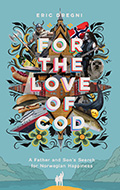
Eric Dregni (MFA 2007)
For the Love of Cod: A Father and Son's Search for Norwegian Happiness
University of Minnesota Press, 2021
From The Star Tribune: "Near the end of his 2008 book, In Cod We Trust: Living the Norwegian Dream, Minnesota writer Eric Dregni told of standing in Norway at the grave of his great-grandfather's mother. He thought of his great-grandfather, 'old Ellef who was born here and is buried in Minneapolis and the baby Eilif who came to Norway to be born.' The boy is a teenager now. Eric Dregni wanted to see what's happened to Norway and Norwegians in the intervening years and whether the country deserves its place at or near the top of annual listings of the happiest places to live. And with his son offering new perspectives, Dregni acts again as an engaging, discerning tour guide. Whether considering Norwegians or their American cousins, his writing tends to the light, humorous and affectionate, but he will focus on the dark, as well."
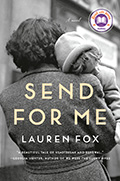
Lauren Fox (MFA 1998)
Send for Me [fiction]
Knopf, 2021
From NPR: "Lauren Fox’s newest novel, Send for Me, is a quiet, heartbreaking, intergenerational story that highlights the insidious racism against Jews in World War II and the lingering effects of family trauma. . . . Fox’s writing is so deft, the story so subtle and sad, flipping seamlessly from World War II Germany to modern-day Milwaukee. It doesn’t put you smack dab in the center of Nazi violence or concentration camp nightmares, but flits around the edges of that brutal history to tell a new, altogether different tale—a story of lucky ones who escaped, and the guilt that haunts them. . . . A richly imagined, lyrically written story that belongs among novels such as The Book Thief and All the Light We Cannot See. The year is still young, but I’ll guarantee this will be on my list of favorites from 2021."

Sari Fordham (MFA 2007)
Wait for God to Notice
Etruscan Press, 2021
From Foreword: "Sari Fordham grew up in the Seventh Day Adventist Church as the child of missionaries; her poetic memoir Wait for God to Notice is about her childhood experiences in Uganda. . . . She writes about her mother, who she both knew and did not know; about how faith was the undercurrent of her family’s life; and about adapting to the unfamiliar environment. With humor and candor, Fordham discusses the political situation in Uganda and the nuances of the Seventh Day Adventist Church. . . . Letters from her parents to her grandparents are incorporated; from these pieces, Fordham constructs new understandings of her parents, and of the country that became lodged in her psyche and in her heart."
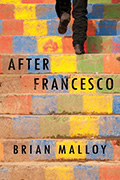
Brian Malloy (MFA 2006)
After Francesco [fiction]
John Scognamiglio Books, 2021
From Oprah Magazine, "50 Best LGBTQ Books That Will Heat Up the Literary Landscape in 2021": "The thing about love stories is that they never truly end, especially true when a relationship ends in tragedy, when the surviving partner is forced to go on while the ghost of their lover lingers. So it is for Kevin, whose partner Francesco has died of AIDS. It's 1988, the height of the epidemic, and former Minnesotan Kevin is tired of funeral hopping. His New York romance with Francesco had been a 'homecoming,' but now that home has become decimated, forcing him to return to the Midwest. Like Rebecca Makkai's The Great Believers, author-activist Malloy's newest novel is a heartrending portrayal of the realities of healing."

William Reichard (PhD 1997)
Our Delicate Barricades Downed [poetry]
Broadstone Books, 2021
From the publisher: "William Reichard writes of small-town and city life on the prairie of his native Minnesota . . . in these haunted, haunting prose poems. Haunted, because there are indeed ghosts in many poems, in the abandoned houses he and his friends explored as boys. . . . Most of all, Reichard is haunted by his long-dead sister, and his more recently departed mother. The 'delicate barricades downed' here are those between worlds, between life and death. But also haunting, because these are not so much ghost stories as ghost's stories, depicting the lives of those who live on the fringes, beyond the bounds, the drunks and battered wives and suicides and pedophiles, the transgressive and the merely other, and most of all the 'country queers.' If Reichard is himself such a ghost, he nevertheless writes with great love and tenderness for his native ground, and the spirit of place also moves in these pages."
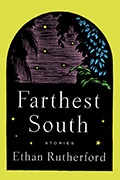
Ethan Rutherford (MFA 2009)
Farthest South [fiction]
A Strange Object, 2021
From The Star Tribune: "Early in Ethan Rutherford's engrossingly creepy story collection Farthest South, a woman tells her husband to read to their two young sons at bedtime. 'They want a ghost story,' she says. 'They said to make it scary.' Rutherford can do scary, no question: The nine well-crafted stories in his second story collection are suffused with piles of bones, shape-shifting creatures, dark woods, starvation, and storms. But Rutherford wants to conjure an atmosphere of eeriness and anxiety more than he wants to frighten. In his best stories, the otherworldliness feels intimately human, exposing our primal concerns about love, parenthood, and death. (Anders Nilsen's pen-and-ink illustrations, evoking Edward Gorey, heighten the feeling.) And he's in good company among a batch of recent writers who've warped and bent ghost and fairy tales to their will, like Karin Tidbeck, Matt Bell, and Carmen Maria Machado."
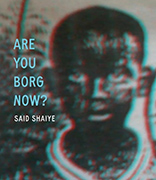
Said Shaiye (MFA student)
Are You Borg Now? [memoir/poetry]
Really Serious Literature, 2021
From Sahan Journal: "Growing up, Said Shaiye found safety in the science fiction show Star Trek: Voyager. The series didn’t just strike a chord with him because it was an action-packed story that took place in space. Star Trek spoke to Said about assimilation, family, and endless journeys in a way that nothing else did. For Said, his family, which went through the deeply traumatic process of displacement together, was his spaceship. Writing became his tool of understanding that trauma. In his debut book, Are You Borg Now? Said creates a new space, somewhere beyond reality and also embedded deep within it, where he warily treads around his childhood trauma with the one other person who lived through it—his younger self. The experimental book blends nonfiction and poetry in an interview Said has with a younger version of himself."

Michael Walsh (MFA 2006)
Creep Love [poetry]
Autumn House Press, 2021
From the publisher: "Michael Walsh’s poetry collection Creep Love explores a family contending with a complex and ongoing crisis, the aftermath of which creates a shockwave that reverberates through these poems. Stories, half-truths, and lies combine into disturbing fable: A young pregnant woman flees her abusive boyfriend only to discover with terror that he is focused on her younger sister. When her younger sister later gives birth to her abusive ex’s other sons, the unsettling presence of the child’s father becomes unavoidable. As tensions rise, attacks within the family escalate and finally culminate in an attempted murder. . . . These poems give witness to the fallout, demonstrating how love can be charged with something ultimately unknowable."
